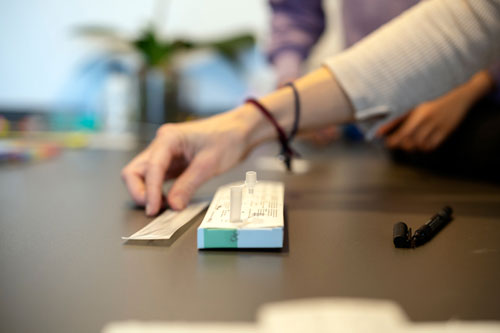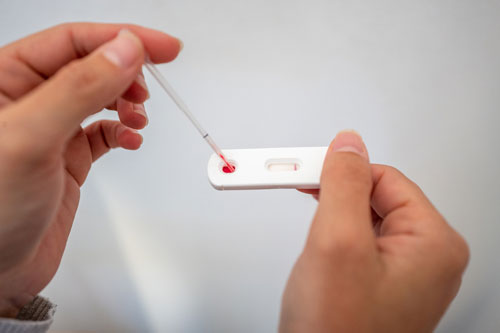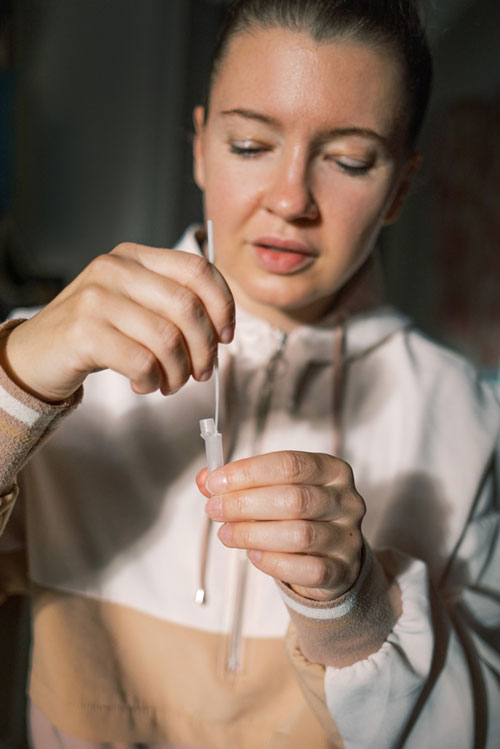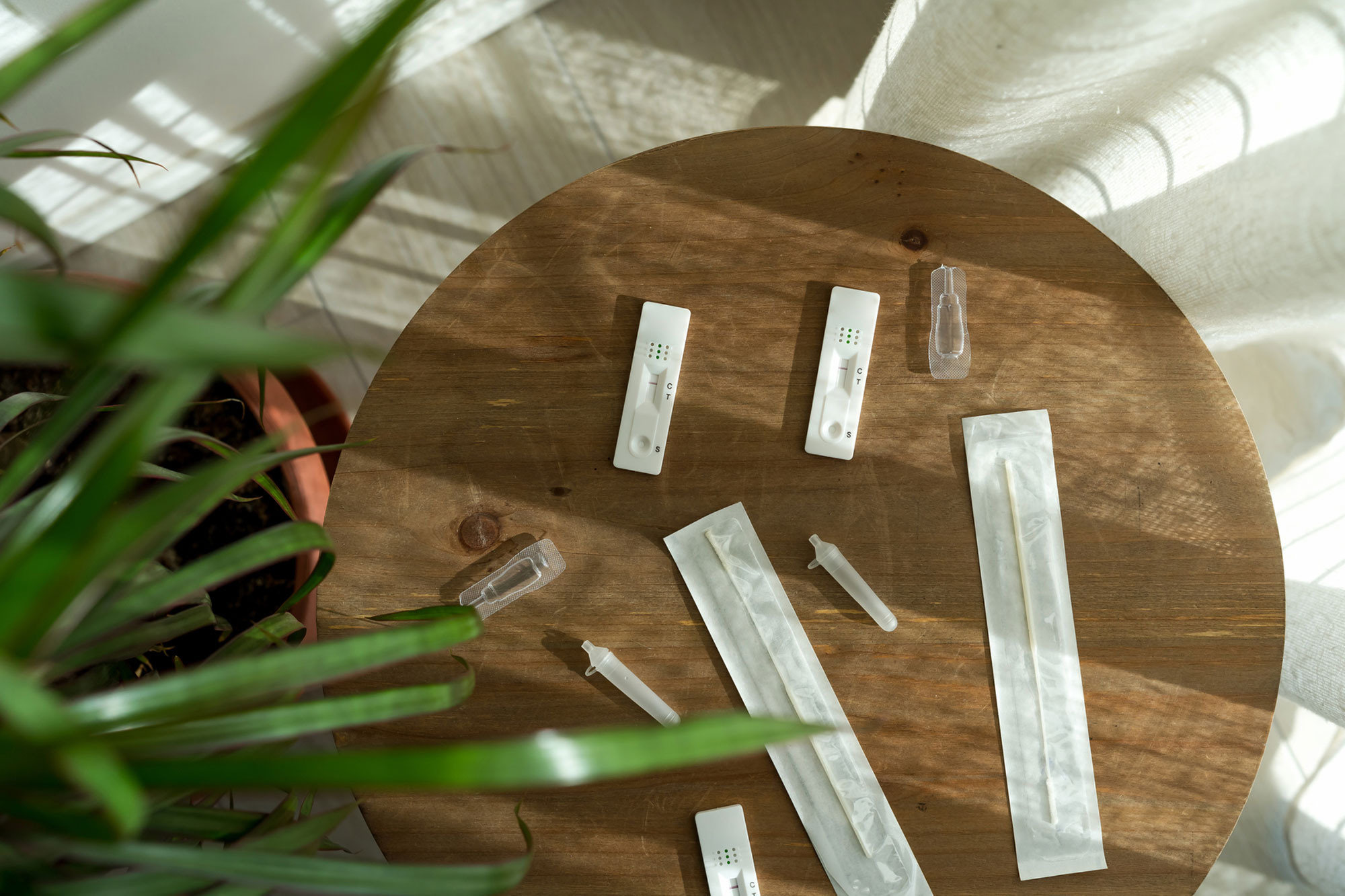From Zoom meetings to live stream exercise classes, the pandemic has made every aspect of our lives more digital. This includes our health. Telehealth — seeing a doctor virtually — has grown hugely over the past two years as people become more trusting in video technology and accustomed to doing everything from their homes. An ASPE report found that the share of Medicare visits done virtually increased 63-fold in 2020.
While COVID-19 continues to be a contagious threat, at-home testing for the specific virus has become commonplace. Simultaneously, at-home health testing is growing across the board. For many of us who had never taken a test of this type before the pandemic, it has become very normalized.
EverlyWell, an at-home testing company that offers COVID testing, has seen demand double for 75% of their other tests. The market is booming, whether it’s the pandemic shedding light on how important health is or a collective realization about how easy these tests are.

What are these tests?
At-home health tests can be used for a whole range of medical concerns. We know all (too) well about COVID-19 tests; others can test for the flu, a yeast infection, or sexually transmitted diseases. Some tests look at levels such as cholesterol, hormones, food intolerances, and allergies. Each test requires a different type of sample and, therefore, a different process — some may be a swap of a particular area while others may require a finger prick blood test.
How do these tests work?
Each test is slightly different, but Charlotte Cremers, a general practitioner, explains that they tend to fall into three main categories: self-tests, self-collection tests, and tests ordered from home. “Self-tests involve collecting samples at home, testing them, and getting the results there and then,” says Cremers. This is much like what happens with a Lateral Flow or Antigen COVID-19 test. The results are immediate, and you don’t have to send the sample away. “For self-collection tests, samples are collected at home and sent to an outside laboratory. The results are then sent electronically after the analysis,” she says. The final type, tests ordered from home, are slightly different. For these tests, you still need to go to the testing facility where the test is made and the analysis conducted. However, the paperwork before the test and follow-up results take place at home to speed up the process.

Are they accurate?
As we have discovered during the pandemic, testing isn’t always accurate. We had all heard cases of tests that had come back negative when the person was positive and also vice versa. As the pandemic is still relatively new, the research is still in its infancy. However, one 2021 study found that at-home antigen tests (also known as a rapid or lateral flow tests) were 78.9% accurate at determining when someone had the virus and 97.1% accurate when someone didn’t. PCR tests were proven more accurate in a 2021 study finding that they detected the virus in 97.2% of cases.
Across the board with medical testing, finding tests that are 100% accurate — both at home or in medical centers — is difficult. Some testing is generally pretty accurate. For example, the testing of sexually transmitted diseases or blood tests for glucose levels. However, other tests for harder-to-measure variables such as food sensitivity are often much less accurate in their findings. It’s best to look at what test you might need and make the decision on a case-by-case basis. Of course, some issues are more suited to home testing than others.
What are the advantages?
Most notably, they save you time and money. Taking a test at home is more convenient and avoids making time in your day to go to the doctor’s office. Tests conducted at home are nearly always cheaper than booking an appointment with a doctor and doing it the traditional way. If you feel embarrassed about doing the test at the doctor or are nervous in a medical setting, at-home tests can provide a better solution.
What are the disadvantages?

However, it isn’t always plain sailing, and there is often more margin for error. Of course, in hospitals and at home, all tests can be done incorrectly or bring back wrong results; however, doing the test yourself is more likely to lead to mistakes and human error. “The patient may order the wrong test, or the patient may do the test incorrectly,” says Dr. Deborah Lee, a sexual and reproductive health specialist of Dr. Fox Online Pharmacy.
If the results are wrong, a false positive and a false negative can cause issues. “If the test is falsely positive — meaning the test is positive when it should be negative — this can cause unnecessary distress and anxiety. If it’s falsely negative — meaning the test is negative when it should be positive — the disease or infection is missed,” she adds. Sometimes it can be a case of buy cheap, buy twice. At-home tests aren’t meant to diagnose you officially, and their companies can’t prescribe medication. So, if you take a test and it shows some cause for concern, or you find that you need a prescription, you will need to follow up with further testing or doctor appointments. It might have just been easier to do this in the first place.
Of course, some tests are more valid and accurate than others. Subsequently, it’s best to look at what test you might need and make the decision on a case-by-case basis. Of course, some issues are more suited to home testing than others.
We only recommend products we have independently researched, tested, and loved. If you purchase a product found through our links, Sunday Edit may earn an affiliate commission.







